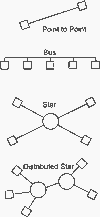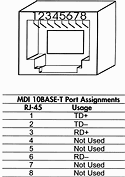
Contemporary Controls defines industrial Ethernet as technology compatible with the Institute of Electrical and Electronic Engineers (IEEE) 802.3 family of standards, but designed and packaged for the requirements and rigours of commercial and industrial applications. Although the basic Ethernet technology is over 25 years old, it has been re-invented several times since its introduction as a half-duplex, shared-media technology. The demands of the much larger commercial market have driven the development of the standard into a high-capacity, high-speed network technology. Although not ideal for the industrial user who is familiar with fieldbuses, Ethernet is quite suited for many applications. It also provides convenient connection to the Internet which offers many possibilities to the designer. Its perceived lower cost and familiarity to customers adds to its attractiveness. Industrial Ethernet can be effective as long as you understand how it can be applied.
Like fieldbuses of today, the original Ethernet was constructed as a bus system where individual stations shared a common backbone connection. This coaxial cable backbone was termed 'thicknet' for its bulky appearance. Eventually the IEEE standardised this physical layer as 10Base5. A subsequent bus implementation called 'thinnet' was standardised as 10Base2. These two bus standards (referred to in IEEE terminology as mixing segments) are no longer popular. what is popular today is the link segment consisting of either twisted-pair or fibre-optic cabling. A link segment is defined to have only two devices attached to a link. In order to expand an Ethernet network a two-port repeater or multiport hub must be used. Popular link standards are 10Base-T, 10Base-FL, 100Base-TX and 100Base-FX. Since there are several physical layer options. Industrial Ethernet can be a bit confusing. There are issues when installing industrial Ethernet, and we address 10 of them in this series of articles.
Topology
Topology is the arrangement of cables within the network. A point-to-point connection would involve a single station connected to a port on a hub, a hub connected to another hub or a station connected to another station. Most industrial users are familiar with the bus connection where several stations share a common connection. EIA-485 or controller area network (CAN) are good examples of bus networks. Unfortunately the bus topology is dead with industrial Ethernet. Although 10Base2 and 10Base5 are indeed bused coaxial Ethernet networks, they are not popular since they are limited to 10 Mbps half-duplex operation and, most importantly, they are not included in the commercial building wiring standard TIA/EIA-568-A which is frequently used when wiring new buildings. For these reasons, industrial Ethernet is wired in a star topology requiring either a repeating hub or switching hub to be in the centre of the 'star'. Therefore, forget about wiring your conveyor system in a very convenient bus topology. If you want industrial Ethernet, you need to wire it in a star or distributed star topology. A distributed star requires a hub-to-hub connection (Figure 1).

Cabling
Now that we have eliminated coaxial cable from consideration, what cable can you use? You can use either shielded twisted-pair (STP), unshielded twisted-pair (UTP), multimode or single-mode fibre-optic cable. We will ignore wireless in this discussion. There are several categories of twisted-pair cable based upon bandwidth and therefore, performance. At the lower 10 Mbps data rate, there is usually not too much concern about cable quality. However, if plans are for eventual migration to 100 Mbps, then either Category 5 or 5e is highly recommended. In fact, if you are pulling new cable only use one of these two cables. UTP is much more popular than STP. STP will only be effective if shielded RJ45 jacks are being used on the equipment.
For each fibre-optic link, a pair of fibres is required. Usually several fibres are pulled to provide spares. The most popular multimode fibre-optic cable is 62,5/125 µm; however, 50/125 µm can be found. A single-mode fibre-optic cable will have an inner core diameter of 10 µm or less. At 10 Mbps, usually multimode fibre is used. At 100 Mbps, both single-mode and multimode fibre can be found.
Connectors and connections
For twisted-pair cable, the RJ45 remains the most popular connector although it is frequently criticised for its lack of robustness. There has been a movement to utilise IP67 rated micro connectors for data rates up to 100 Mbps. As a compromise, bulkhead mounted 'boot' covered adapters exist to make RJ45 connectors survive an IP67 environment.
For twisted-pair cabling, two pairs are required for communications. One is for transmitting and the other for receiving. The pinouts on the RJ45 connector define the medium-dependent-interface (MDI) and are labelled RD+, RD-, TD+ and TD- (Figure 2). These signal definitions are for the data terminal equipment (DTE). A DTE is any source or destination for data. An example of a DTE would be a workstation. On the other end of a link is data communication equipment (DCE). DCEs facilitate data communication.

An example of a DCE would be a repeating hub or switching hub. In order to communicate, transmitters must be tied to receivers so there must be a crossover of signals. If the crossover function is accomplished at the connector, the connector should be identified as a MDI-X port. This is what is usually done on hubs so that straight-through cables can be used to attach a DTE to a DCE. What happens if you want to connect two DTEs together or two DCEs together? You would need a crossover cable. On some hubs, an uplink port is provided. Instead of being a MDI-X port, the uplink port is a MDI port so a straight-through cable can be used for cascading hubs.
For fibre-optics, there are two types of approved connectors. The quarter-turn ST connector is used at either 10 or 100 Mbps while the SC can be found only at 100 Mbps. For single-mode cable, usually the SC connector is used. A pair of fibres are used for each link in order to support separate receive and transmit paths. Therefore, like twisted-pair connections, receivers must be tied to transmitters, requiring a crossover cable. Ports on both the DTE and DCE are marked as TX and RX to guide connections.
Industrial Ethernet or COTS
Proponents of Ethernet maintain that low-cost commercial-off-the-shelf (COTS) devices can be used in industrial control systems. In some applications this is valid. So what is industrial Ethernet? Contemporary Controls defines industrial Ethernet as technology compatible with the IEEE 802.3 family of standards, but designed and packaged for the requirements and rigours of commercial and industrial applications. Process plants and factories want to use commercially available Ethernet chips and media, but these plants have requirements that differ from those in an office. The first obvious concern is environmental with issues such as high temperature, humidity and vibration. The second concern is convenient mounting with other control equipment in the same control panel. Another requirement is the power source. For safety, some control panels only provide low-voltage AC or DC power to control devices. Wall-mounted power supplies may not be acceptable. The electromagnetic compatibility (EMC) requirements differ with industrial locations requiring a higher immunity to EMI and ESD. Regulatory safety approvals differ from that in an office. Process plants may require hazardous location ratings. A factory may require an industrial control panel approval while a building automation system may necessitate a smoke and fire approval rating. These are unique application standards that low-cost, office-grade Ethernet hubs and switches fail to address. Consider if you want an office hub, mounted with Velcro, on your $100 000 machine.
Part II will continue in a subsequent issue.
| Tel: | +27 12 493 0852 |
| Email: | [email protected] |
| www: | www.epd.co.za |
| Articles: | More information and articles about Electronic Products Design |
© Technews Publishing (Pty) Ltd | All Rights Reserved